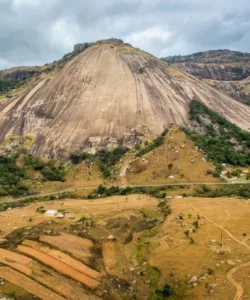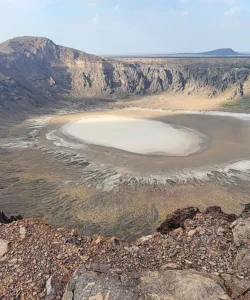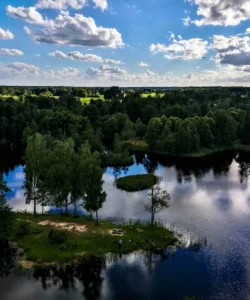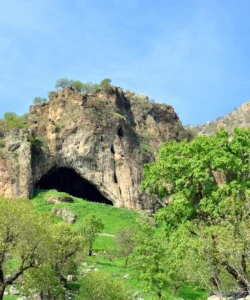Shanidar Cave is a globally significant archaeological site located in the Zagros Mountains of the Kurdistan Region of Iraq. It is not famous for its architecture or natural beauty in a traditional sense, but for the profound insights it has provided into the lives and culture of Neanderthals. The cave has been a continuous source of debate and discovery, fundamentally changing our understanding of our closest evolutionary relatives.
Name: Shanidar Cave (Kurdish: Şaneder; Arabic: كهف شاندر, Kahf Shanidar)
Address: The cave is situated within Bradost Mountain in the Nineveh Governorate of northern Iraq, overlooking the Greater Zab river valley. It is located north of the city of Erbil.
How to Get There:
Travel to Shanidar Cave is currently difficult and unsafe for general tourism due to political instability in northern Iraq. The following information is for historical context and is not a recommendation for travel.
- By Air: The closest international airport is Erbil International Airport (EBL). From Erbil, a vehicle would be necessary to reach the base of the mountain.
- By Road: In more stable times, a road leads to the foothills, and from there, a constructed path of stone and wood leads up to the cave entrance.
- Best Time to Visit: Not applicable due to security concerns.
Landscape and Archaeology:
The “architecture” of Shanidar Cave is a natural formation that has served as a sanctuary for hominins for tens of thousands of years. Its archaeological significance is revealed through layers of sediment.
- Geological Formation: The cave is a large, limestone cavern with a high ceiling and a flat earthen floor. It was formed by the dissolution of limestone beds and is situated at an elevation of about 740 meters (2,400 feet) above sea level.
- Multi-Layered Excavation: The cave floor is a deep, multi-layered “book” of history. The first major excavations in the 1950s by Ralph Solecki revealed a 14-meter-deep trench containing numerous cultural layers, from the Paleolithic era to the Proto-Neolithic period.
- Neanderthal Burials: The most important layer, the Mousterian layer, contained the remains of at least ten Neanderthal individuals (and a new find in the last decade, “Shanidar Z”). These individuals, labeled Shanidar 1 through Shanidar 10, were found at depths of 4 to 7 meters.
- “Flower Burial”: The most famous finding, known as the “Flower Burial” (Shanidar 4), was a cluster of four individuals found in a small pit. The presence of clumps of ancient pollen in the soil around the body led Solecki to hypothesize that flowers had been deliberately placed in the grave, suggesting a capacity for symbolic thought and ritual. While this interpretation has been heavily debated, with some arguing the pollen was left by burrowing bees, it remains a powerful and famous hypothesis.
- Evidence of Compassion: The discovery of “Shanidar 1,” a male Neanderthal who had survived numerous serious injuries—including a crushed skull that would have left him partially blind, a withered arm, and a paralyzed lower body—is considered evidence of Neanderthal compassion and social care. The fact that he lived to be an estimated 40-50 years old suggests he was cared for by his group.
What Makes It Famous:
- The “First Flower People”: Shanidar Cave is globally famous for the “Flower Burial,” which, for the first time, suggested that Neanderthals were not simply brutish, ape-like creatures but may have had a complex social and spiritual life, including burial rituals and an emotional connection to the dead.
- Evidence of Social Care: The remains of Shanidar 1 provided compelling evidence that Neanderthals cared for the sick and injured, a behavior previously believed to be exclusive to early modern humans. This discovery revolutionized the image of Neanderthals in popular culture and scientific circles.
- A “Living” Archaeological Debate: The cave continues to be a site of active debate and new discoveries. The original excavations were revisited by a new team in 2014, and the discovery of a new Neanderthal individual, “Shanidar Z,” has provided a new opportunity to use modern technology to re-examine the original findings and contribute to the ongoing discussion about Neanderthal culture.
- A Unique Neanderthal “Family”: The site contained one of the largest concentrations of Neanderthal remains ever found in one place, offering an unprecedented look into the lives of a community of Neanderthals.
Differences from Some Other Wonders:
- Subterranean and Natural Wonder: Unlike man-made monuments like the Great Ziggurat of Ur or the Imam Hussein Shrine, Shanidar Cave is a natural geological formation whose “wonder” is what was discovered inside it. Its significance is archaeological rather than architectural.
- Prehistoric and Hominin Focus: The cave’s fame is tied to a much earlier period of history—the Middle Paleolithic—and a different species of hominin, the Neanderthals. This sets it apart from other Iraqi sites, which are focused on the history of Homo sapiens and later civilizations.
- Debate as Part of the Fame: The fact that the most famous finding (the “Flower Burial”) is a highly contested hypothesis is a key part of its story. This ongoing scientific debate makes it a “living” wonder in a way that static ruins are not.
- “Hidden” Wonder: The wonder of Shanidar is not in what is seen at the site itself (though a cave is a powerful visual), but in what was extracted from its depths—the bones and the stories they tell. The original artifacts are now in museums and labs, so the site’s value is in its historical context and the potential for new discoveries.

























































